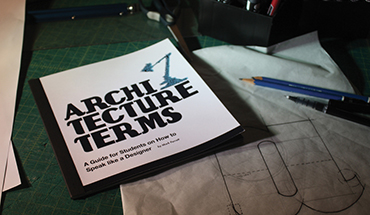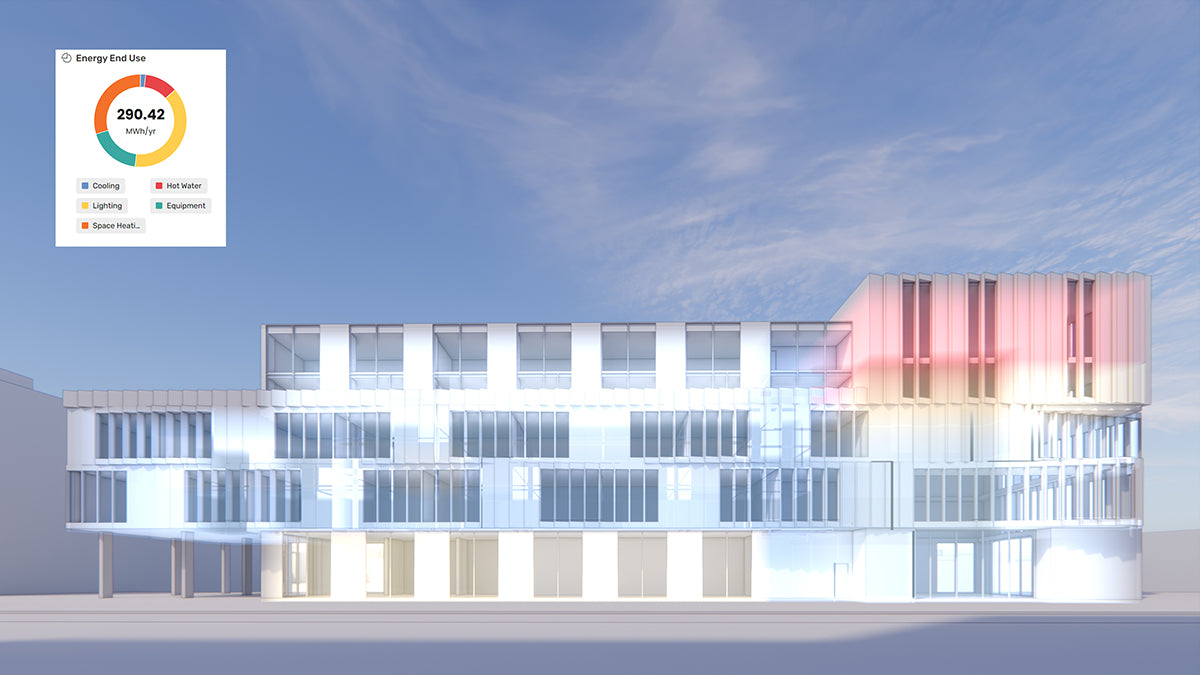Your Cart is Empty
Customer Testimonials
-
"Great customer service. The folks at Novedge were super helpful in navigating a somewhat complicated order including software upgrades and serial numbers in various stages of inactivity. They were friendly and helpful throughout the process.."
Ruben Ruckmark
"Quick & very helpful. We have been using Novedge for years and are very happy with their quick service when we need to make a purchase and excellent support resolving any issues."
Will Woodson
"Scott is the best. He reminds me about subscriptions dates, guides me in the correct direction for updates. He always responds promptly to me. He is literally the reason I continue to work with Novedge and will do so in the future."
Edward Mchugh
"Calvin Lok is “the man”. After my purchase of Sketchup 2021, he called me and provided step-by-step instructions to ease me through difficulties I was having with the setup of my new software."
Mike Borzage
Interview with Mark Perrett, Founder of Tips for Architecture School: “Take what you have learned from one genre and apply it to everything else you do in life”
January 22, 2013 6 min read
I discovered Tips for Architecture School, while looking for great blogs to follow on Tumblr. Mark Perrett has built a great resource for anyone currently studying architecture or planning to do so. His blog is also a useful reminder of what it means to start on this path and how much things have changed. Here's what he shared with us.

Novedge: Tell us about yourself and your blog Tips for Architecture School. How did it start and why?
Mark Perrett: I started Tips for Architecture School out of pure necessity. My love for teaching pushed me to become a graduate teaching assistant at my university and my first day with the class was not what I expected. I knew I would be helping people with their designs, and teaching them new methods of drawing and construction they had never seen before, but I did not expect there to be so many questions about even the most basic things like what kind of glue to buy and what pencils to use. I began writing every question the students asked in my sketchbook and when I gave the class an answer, I would fill it in next to the question. After the first two weeks, my sketchbook was almost full with words, phrases, quotes, and questions answered from all my students. I showed it to a friend of mine and he, almost as a joke, said “You should save some paper and write a blog.” So I did. 



Novedge: What inspires you?
Mark Perrett: I’m 26 now, but I died at age 5. When I was younger, I was thrown off of a horse and
trampled. I was rushed to the E.R. and became clinically dead for a few seconds before the doctors got to work. After a year, I completely recovered.

The older I get, the more I can’t help but think that I got a second chance to take advantage of life, and so inspiration comes in abundance. Over time, I have tried to develop a filter for greatness. I look at the world around me and sift through to find the good in everything. If I had to choose one person in particular who inspires me the most it would be my mother. She was, and still is, a great role model for me. Growing up, we lived a modest life, and didn’t really have much, but she taught me how to be positive, innovative, intuitive, and imaginative under any circumstances. This encouraged a fascination with learning and how things work in life in general.

When I got older, I marched in marching band and also toured all over the country for four seasons with a Drum and Bugle Corps. Still to this day most of my mentors, values, and work ethic come from all of my years with music. It is funny when my musician friends read my architecture school blog because they can point out the principles I learned from music as they read each post. Especially as I come close to graduating with my Master’s degree and entering the “Real World”, the need for inspiration and encouragement is growing by the day.
Whenever I am feeling inadequate, or that the work I am doing is not sending me in the
right direction, I have a few key players in my box of inspiration. And for the record, everybody should have a box of inspiration.
Here's what is in my box:
Eric Thomas | The Secrets to Success
Will Smith | Talent vs Skill
Morgan Freeman | Oprah’s Master Class
Robert Kiyosaki | Rich Dad Poor Dad
Barry Green | The Inner Game of Music (Self 1 and 2)
and Bruce Mau | Incomplete Manifesto for Growth
Just to name a few…

Novedge: What have you learned by writing your blog and answering questions from
students?
Mark Perrett: This blog has taught me not only a lot about others, but a lot about myself. In fact, Iwrite every post as if I am addressing myself from the past, which keeps me honest. It is almost like I am going back in time and sharing all of the secrets to life I have learned through experience, but instead of talking to myself, I am talking to the prospective students within my field. That is what teaching is, in a way, a real-time form of time travel. I am in the present, passing on my knowledge from the past, to help people in the future.
Originally this blog was meant to be a place for my intro students to go and read the tips I was writing for them, but the blog started becoming more popular within the Tumblr community and people from around the world began to follow. The questions started pouring in from Singapore, Serbia, Australia, France, Iran, England, The Philippines, and much more. It was surprising to see that I could answer a question from one student and it was beneficial for thousands of other students around the world.
It's not just architecture students either. The information can be applied across many platforms of design and life in general. In fact, I believe that application is the most important attribute to all education. Being able to take what you have learned from one genre and apply it to everything else you do in life is a key trait in maxing out your current knowledge to its full potential.

Novedge: What software do you use? What software do you recommend to architecture
students?
Mark Perrett: Software is undoubtedly one of the most integral parts of an architect’s education. Through school I have learned and used the following programs: AutoCAD, Adobe Photoshop, Rhino, Grasshopper, Revit, Adobe Illustrator, Google SketchUp, V-Ray for SketchUP and Adobe Dreamweaver.There are many more programs out there like Kerythea and Adobe Lightroom that I seeused a lot, but If I had to pick three programs to prepare you for architecture school they would be AutoCAD, Photoshop, and SketchUP. Here is why:
AutoCAD is one of the most widely used in the industry, but it is so much more than just a software for making clean plans and sections. I use AutoCAD with our laser cutters and CNC Router to build accurate 3D models and prototypes. Another great feature is the 3D modeling capabilities to create high quality 3D graphics. If you are getting into the field of architecture, you will need to be able to use this program.
Adobe Photoshop is a great equalizer. You don’t have to be a wizard of rendering software to produce beautiful graphics. A proficient amount of skill in Photoshop can help you produce stunning graphic representations of your work even if you are not a pro at too many other programs.
SketchUP is the “McDonald’s of software” in the design profession. Everyone uses it, it works great, but it is not as “healthy” for you as some other 3D modeling software because of its brutal simplicity. Other 3D modeling software can do much more, but this is a great place to start. I have heard plenty of snide remarks from professors about this program, but I love it. I can either quickly sketch out an idea or spend hours detailing my entire model, but the program as a whole allows me to make quick, easy digital models for my projects which can later be exported to many other programs for further development. Plus, I can mass a model out in SketchUP and import it into Rhino if I want to use complex forms, parametric modeling, or print on a 3D printer.

Novedge: What innovations do you see in your field, now or in the future?
Mark Perrett: Of course we will always be improving on things like renewable resources and energy
efficiency, but I think the innovations for the future of architecture will focus more on architectural amenities. And I’m not talking about bathroom tile.
I imagine that, as technology becomes more advanced, so will the way we inhabit space and interact with architecture. Interactive architecture is a growing interest in this field. Architecture has such a broad spectrum it really shapes the way we eat, sleep, work, play, and live life in general. Here is a video that always gets me thinking when looking into the future of architectural design: A Day Made of Glass… Made possible by Corning.
A section of my thesis also deals with interactive architecture in the public realm. A group of four students (including myself) from the University of South Florida School of Architecture + Design has developed an urban design collaborative called The Urban Conga. We activate public spaces by installing interactive installations in downtown/urban settings, creating arenas for exploration, and promoting free choice learning. Learn more about The Urban Conga here.

You can see Mark's personal work on his website and you can read his Tips for Architecture School on his blog. You can purchase his book Architecture Terms | A Guide for Students on How to Speak like a Designerhere.
Also in NOVEDGE Blog

How the AEC Industry Shifted Towards Essential Sustainable Building Design
August 15, 2024 4 min read
Read More
Unlocking New Realms of Design with Enscape 4.1: Introducing Impact Add-on and Lot More
August 02, 2024 2 min read
Read More
Explore Autodesk Revit 2025.2: New Features and Enhancements for Enhanced BIM Workflows
July 30, 2024 3 min read
Read MoreSubscribe
Sign up to get the latest on sales, new releases and more …


